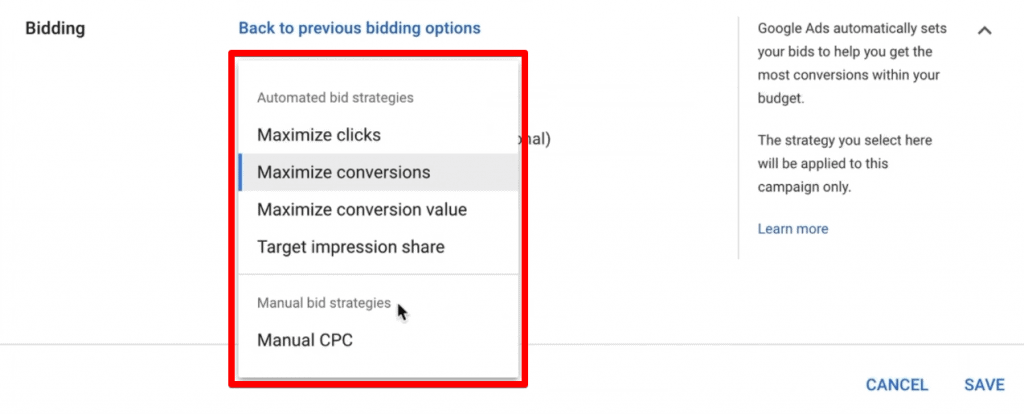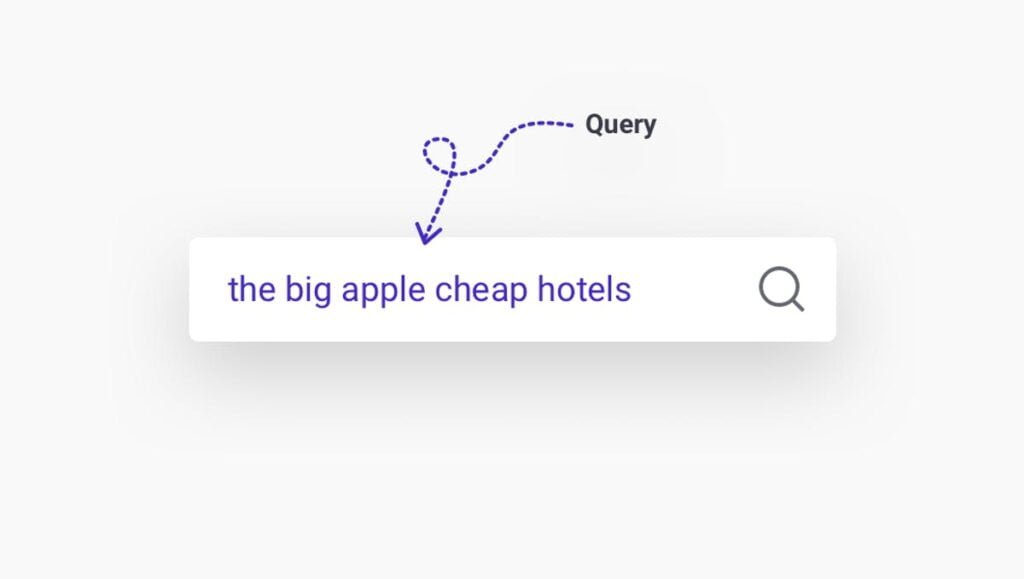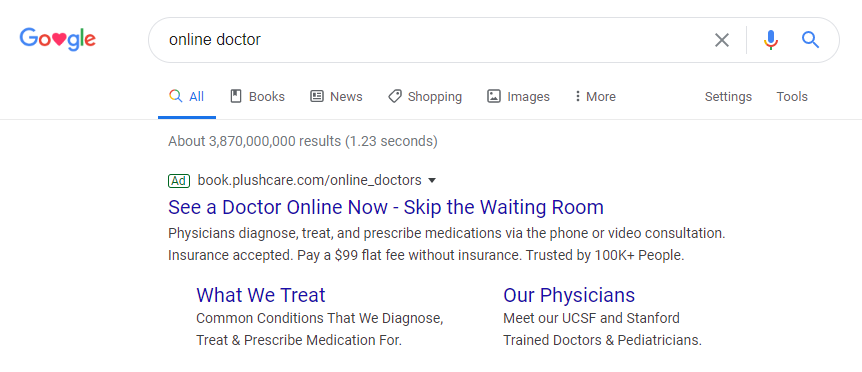Address
Suncity P&T Colony, Rajendra Nagar, Hyderabad.
Work Hours
Monday to Friday: 9 Am - 4 Pm EST
Saturday: 10 Am - 2 Pm EST
Address
Suncity P&T Colony, Rajendra Nagar, Hyderabad.
Work Hours
Monday to Friday: 9 Am - 4 Pm EST
Saturday: 10 Am - 2 Pm EST


Welcome to this comprehensive guide to Manual CPC bidding in Google AdWords online advertising. If you’re looking to get the most out of your ad campaigns, it’s essential to have a solid understanding of how CPC bidding works and how to optimize your bids for maximum ROI.
Manual CPC, or manual cost-per-click, is a bidding strategy in which advertisers set a maximum CPC bid for their ads. This bid amount is the maximum that an advertiser is willing to pay for a click on their ad. CPC bidding is a critical component of online advertising, as it determines ad placement and can significantly impact ad performance and ROI.
In this article, we’ll cover everything you need to know about Manual CPC, including how it works, how to calculate a competitive bid, different bidding strategies, the impact of high CPC, and tips for maximizing CPC bid. We’ll also compare CPC and CPM bidding strategies, discuss the importance of CPC for advertisers, and provide real-life examples of successful CPC campaigns.
So, whether you’re new to pay-per-click advertising or a seasoned PPC pro, read on to learn how to master Manual CPC bidding and take your ad campaigns to the next level.

CPC bidding is a type of auction-based advertising, where advertisers compete against one another to display their ads on the search engine results page or other ad spaces. Here’s a breakdown of how the auction process works:
CPC bids play a crucial role in determining where ads are placed in the ad auction. Advertisers set a maximum CPC bid, which is the maximum amount they’re willing to pay for a click on their ad. The actual amount that an advertiser pays for a click can be lower than their maximum bid, depending on the competition and Ad Rank of their ad.

There are several different types of bidding strategies that advertisers can use, including manual CPC bidding and automated bidding strategies. Manual CPC bidding allows advertisers to set their maximum CPC bids for individual keywords or ad groups, while automated bidding strategies like maximize conversions use machine learning to set bids based on advertiser goals and historical performance. Smart bidding strategies, for example, use machine learning to optimize bids for conversions or conversion value.

Determining a good CPC bid can be tricky, as it depends on several factors, including competition, relevancy, and ad performance. Here are some factors that can influence CPC bid amounts:
To determine a competitive bid, it’s important to conduct keyword research and analysis to identify the estimated cost per click for your target keywords. You can use tools like Google Keyword Planner or third-party keyword research tools to get an idea of how much you should bid for each keyword. It’s also important to consider your budget and the potential return on investment for each click.
Strategies for balancing budget and bid amounts include setting a daily budget limit to ensure you don’t overspend, using bid modifiers to adjust bids based on device, location, and other factors, and focusing on high-performing keywords to maximize ROI. It’s important to regularly monitor and adjust your bids based on performance data to ensure you’re getting the best results for your budget.
Sure! Here’s a section that covers what you’re looking for:
CPC bid is calculated using the following formula:
CPC bid = (Competitor Ad Rank / Quality Score) + $0.01
The Competitor Ad Rank is determined by multiplying the competitor’s Maximum CPC bid by their Quality Score. Quality Score is a metric that measures the relevancy and performance of your ad, keyword, and landing page. The higher your Quality Score, the lower your CPC bid can be.
Bid amount also affects ad placement. The higher your bid, the more likely your ad will appear in a higher position on the search results page. However, bid amount isn’t the only factor that determines ad placement. Google also takes into account ad relevancy, landing page experience, and expected click-through rate (CTR) when determining Ad Rank.
Quality Score also impacts CPC bid. Ads with higher Quality Scores are more likely to have lower CPC bids, as they are considered more relevant and valuable to users. To improve Quality Score, focus on creating high-quality ads, using relevant keywords, and improving landing page experience.
By calculating your CPC bid and focusing on improving your Quality Score, you can optimize your ad performance and get the most out of your advertising budget.
There are several bidding strategies available for advertisers to choose from. Each strategy has its own pros and cons, and the best strategy for your campaign depends on your specific goals and budget. Here are some of the most common bidding strategies:
Pros: Allows for complete control over bidding, can be more cost-effective than other strategies
Cons: Requires frequent monitoring and adjustment, can be time-consuming
Pros: Takes the guesswork out of bidding, can be effective for campaigns with a set budget
Cons: Requires historical conversion data, may not be as effective for campaigns with low conversion volume
Pros: Can be effective for campaigns with high-value conversions, allows for more efficient use of budget
Cons: Requires historical conversion data, may not be as effective for campaigns with low conversion volume
Pros: Can be effective for campaigns with a mix of high- and low-performing keywords, requires less manual monitoring
Cons: May not be as effective for campaigns with low conversion volume, requires conversion tracking
By understanding the different types of bidding strategies available, you can choose the best one for your campaign and maximize your ad performance.
High CPC bids can have a significant impact on the effectiveness of your advertising campaigns. When your CPC is too high, you may find that your ads are being displayed less frequently or in less prominent positions, which can lead to a decrease in clicks and conversions. Additionally, a high CPC can quickly deplete your budget, making it difficult to sustain your advertising efforts over time.
To reduce your CPC bids, there are several strategies you can use. One effective approach is to optimize your ad relevancy and ad strength. By ensuring that your ads are highly relevant to your target audience and have strong ad copy, you can increase your Quality Score, which can lead to a decrease in CPC bids.
Another strategy is to utilize ad extensions, which can increase the perceived value of your ads and make them more attractive to users. Call-only ads, for example, can be highly effective in generating phone calls and conversions from mobile users, while sitelink extensions can provide additional information and options for users to engage with your brand.
If you find that your CPC bids are still too high despite these optimization efforts, you may need to adjust your budget or shift your targeting to more specific audiences. For example, you may choose to focus on long-tail keywords or niche audiences, which can be less competitive and therefore have lower CPC bids.
Overall, it is important to regularly monitor and adjust your CPC bids to ensure that your advertising campaigns are effective and sustainable over time. By utilizing optimization strategies and adjusting your targeting as needed, you can minimize the impact of high CPC bids and maximize the performance of your ads.
When it comes to maximizing your CPC bids, there are a few key factors to keep in mind. First, it is important to understand the maximum CPC limit and maximum CPC bid limit that are in place for your advertising campaigns. These limits can vary based on your industry, location, and other factors, and may be set by the ad platform or by your own budget constraints.
To increase your CPC bids, you can adjust your bidding strategy or budget. For example, you may choose to switch to a smart bidding strategy, which can automatically adjust your bids based on factors like user intent and conversion probability. Alternatively, you can increase your budget to allow for higher CPC bids, though this can come with the risk of overspending and exhausting your budget too quickly.
It is important to carefully consider the risks and benefits of increasing your CPC bids before making any changes. While higher bids may result in more prominent ad placement and increased clicks and conversions, they can also lead to higher costs and reduced profitability if not managed effectively.
Ultimately, the key to maximizing your CPC bids is to find the right balance between bid amounts, budget, and ad performance. By regularly monitoring your campaigns and adjusting your bids as needed, you can ensure that your advertising efforts are effective and sustainable over time.

In online advertising, there are two primary bidding strategies available: CPC and CPM. CPC, or cost per click, involves paying for each click your ad receives, while CPM, or cost per thousand impressions, involves paying for every thousand times your ad is displayed.
The decision on which strategy to use will largely depend on your advertising goals and budget constraints. If you aim to drive clicks and conversions, CPC may be the better choice as it only charges for users who engage with your ad. In contrast, CPM may be more suitable for generating brand visibility and increasing impressions.
One significant advantage of CPC bidding is its precise budgeting and targeting, as advertisers can set specific bids for each keyword or ad group. Additionally, CPC bidding may be more cost-effective in certain situations since advertisers only pay for clicks instead of impressions.
However, using CPC bidding has potential drawbacks as well. High competition for popular keywords can drive up bid amounts, making it challenging to achieve prominent ad placement. Additionally, the cost per click can vary widely, depending on factors such as ad relevance and Quality Score, which makes it difficult to predict costs accurately.
Conversely, CPM bidding can be an excellent choice for advertisers looking to generate broad brand awareness and reach a large audience. This strategy can be particularly effective for display advertising campaigns, where the primary goal is to get users to see and remember your brand.
Despite its potential benefits, CPM bidding also has some disadvantages. For example, it can be difficult to measure the effectiveness of CPM campaigns since the focus is on impressions, not clicks or conversions. Moreover, CPM campaigns may not be cost-effective if the cost per thousand impressions is high and the ad fails to generate significant brand awareness or engagement.
The choice between CPC and CPM bidding will depend on your unique advertising goals and budget constraints. By carefully considering the pros and cons of each strategy and testing both approaches over time, you can determine which approach is best for your specific needs.
It is worth noting that while CPC is the most common bidding strategy used in online advertising, CPM can also be a useful strategy for certain ad types. CPM is often used for display ads, such as banner ads or native ads, while CPC is commonly used for search ads, shopping ads, and call-only ads. However, it is crucial to understand that each platform may have different options for which ad types can be set with CPM bidding. Therefore, it is recommended to consult the platform’s documentation or support team to understand the available options.
CPC is an important metric for many industries and advertising scenarios. For example, in the e-commerce industry, CPC can be crucial for driving website traffic and generating sales. Similarly, in the B2B sector, CPC can be an effective way to reach decision-makers and drive leads.
One successful example of a CPC campaign is the search advertising campaign by Dollar Shave Club. The company used targeted keywords and high-quality ad copy to drive clicks and conversions. By focusing on a specific audience and using compelling messaging, Dollar Shave Club was able to achieve a low CPC and high conversion rate, leading to increased revenue and customer acquisition.
Another example of a successful CPC campaign is the search advertising campaign by Udacity, an online education platform. By using targeted keywords and dynamic ad copy, Udacity was able to drive clicks and conversions while also maintaining a low CPC. Additionally, the company focused on continually optimizing their ad campaigns, including testing different ad copy and bidding strategies, which helped them achieve even better results over time.
What made these campaigns successful was a combination of factors, including targeting the right audience, using high-quality ad copy and imagery, and continually optimizing the campaigns for better performance. In addition, these companies understood the importance of monitoring their CPC and adjusting their bidding strategies as needed to improve ad performance and ROI.
Overall, CPC can be an important metric for many industries and advertising scenarios. By understanding how to optimize CPC and continually monitoring and adjusting bidding strategies, advertisers can drive more clicks, conversions, and revenue.
CPC bidding is subject to various rules and regulations designed to ensure fair competition and protect consumers from misleading advertising. One important set of regulations governing CPC bidding is the Federal Trade Commission’s (FTC) advertising guidelines, which require that ads be truthful, not misleading, and supported by sufficient evidence.
In addition to these general advertising regulations, there may be specific rules and policies related to CPC bidding on individual advertising platforms. For example, Google Ads has strict policies regarding ad relevance, ad format, and landing page experience, which can impact an advertiser’s CPC bid and ad performance.
To ensure that their CPC campaigns are effective and compliant with regulations, advertisers should follow best practices for CPC bidding. These best practices include conducting thorough keyword research to identify relevant and high-traffic keywords, regularly monitoring and adjusting bids to optimize ad performance, and continually testing and refining ad copy and landing pages.
It is also important for advertisers to avoid common pitfalls that can negatively impact CPC performance, such as failing to set realistic bid amounts, using generic or irrelevant keywords, and neglecting to monitor and adjust bids regularly. By following best practices and avoiding these common mistakes, advertisers can maximize the effectiveness of their CPC campaigns and achieve a strong return on investment.
In addition to these rules and regulations, it is also important for advertisers to stay up-to-date with changes in CPC bidding and advertising policies. By regularly reviewing platform documentation and seeking guidance from industry experts, advertisers can ensure that their CPC campaigns remain compliant and effective over time.
Calculating CPC is a fundamental aspect of any pay-per-click advertising campaign. CPC, or cost per click, is the amount that an advertiser pays for each click on their ad. The formula for calculating CPC is simple:
CPC = Total cost of clicks / Total number of clicks
For example, if an advertiser spent $100 on their ad campaign and received 50 clicks, their CPC would be $2.
It’s important to note that CPC is not a fixed cost and can fluctuate based on a variety of factors, including ad relevance, keyword competition, and the Quality Score of the ad. Quality Score is a metric used by search engines like Google to measure the relevance and quality of an ad, keyword, and landing page. A higher Quality Score can lead to lower CPC and improved ad performance.
To optimize CPC, advertisers can focus on improving their Quality Score through techniques such as keyword research, ad copy optimization, and landing page optimization. Additionally, targeting more specific and relevant keywords can also help to lower CPC and increase ad performance.
Overall, calculating and optimizing CPC is essential for maximizing the ROI of a pay-per-click advertising campaign. By monitoring CPC and taking steps to improve Quality Score and ad relevance, advertisers can improve ad performance and ultimately drive more conversions and revenue.
When it comes to optimizing CPC and improving ad performance, there are several tests and modules available to advertisers. These tests and modules can help you evaluate the effectiveness of your CPC strategy and identify areas for improvement.
Four common tests for CPC include the Incremental Lift Test, the Brand Lift Test, the Ad Copy Test, and the Landing Page Test. The Incremental Lift Test measures the impact of your ad campaign on consumer behaviour by comparing a test group that has been exposed to your ads to a control group that has not. The Brand Lift Test evaluates the effectiveness of your ads in terms of increasing brand awareness and perception. The Ad Copy Test analyzes the impact of different ad copy on click-through rates and conversions. The Landing Page Test assesses the effectiveness of different landing pages in terms of driving conversions.
There are also five modules for CPC that can help optimize your advertising strategy. The Budget Optimization module allows you to adjust your budget based on factors like time of day or location to maximize ad performance. The Bidding Strategies module enables you to set automated bidding rules to optimize your bids and improve ROI. The Targeting module allows you to refine your audience targeting based on factors like demographics and interests. The Ad Formats module lets you test different ad formats to see which performs best. Finally, the Reporting module provides detailed metrics on ad performance to help you make informed decisions about your CPC strategy.
In order to optimize CPC and improve ad performance, it is important to regularly test and evaluate your strategy using these tests and modules. By identifying areas for improvement and making data-driven decisions, you can increase the effectiveness of your ads and drive more conversions and revenue.
In conclusion, Manual CPC is an essential aspect of online advertising that can greatly impact ad performance and ROI. By carefully considering the pros and cons of CPC bidding and implementing best practices and strategies, advertisers can optimize their campaigns to drive more conversions and revenue.
To recap, we discussed the definition and importance of CPC, as well as the different types of CPC and how to calculate it. We also covered rules and regulations governing CPC bidding, common pitfalls to avoid, and real-life examples of successful CPC campaigns.
At Bixeltek, we specialize in helping businesses optimize their online advertising campaigns for maximum ROI. If you’re interested in learning more about our services or have any questions about CPC or online advertising, please don’t hesitate to contact us. Our team of experts is always happy to help.